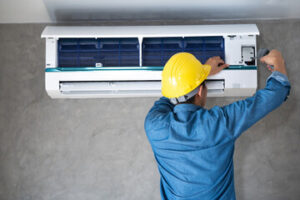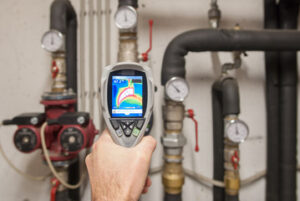Bricklayer Perth constructs and repairs chimney stacks, walls, and tunnel linings. They also refurbish decorative stonework on restoration projects. They use a variety of tools and materials to lay bricks. Bricklayers must be confident in measuring distances and laying work aligned with blueprints.
There are several ways to become a bricklayer, including college courses, apprenticeships, and on-the-job training. Usually, bricklayers must obtain a Construction Skills Certificate Scheme card before working on a building site.

Bricklayers are a critical part of the construction industry, and the skills required for this trade are in demand. They are responsible for laying bricks and other building structures, and they must be able to work safely on construction sites in all weather conditions. They also need to be able to read blueprints and other plans. In addition, bricklayers should be able to use hand tools and small power tools. If you are interested in becoming a bricklayer, consider taking some courses at a local community college or technical institute. These programs can provide a foundation for your career, and may help you to earn higher wages.
While a high school diploma is not always a requirement for this role, it will certainly give you an edge when applying for jobs or apprenticeships. Many construction companies offer apprenticeships to prospective bricklayers, and the job training is typically split between classroom studies and on-the-job experience. This is a great way to gain hands-on experience in the field and to learn from a qualified bricklayer.
Those who have completed an apprenticeship can apply to become certified as a journeyperson bricklayer. The process is voluntary in most provinces, but it is recommended. It will demonstrate to potential employers that you are a skilled professional. Depending on the country, certification can lead to a higher salary.
In addition to brick laying, bricklayers perform a variety of other tasks on construction sites. This includes interpreting work orders, calculating the number of materials required and determining horizontal and vertical alignment of courses. They must also be able to measure accurately and work well under pressure.
Bricklayers should also be able to perform masonry repair and demolition work. They must be able to remove excess mortar and finish mortar joints for a smooth, uniform appearance. They must also be able to work safely on ladders and scaffolding.
The most common career path for a bricklayer is to join a union, which provides a variety of benefits and opportunities for advancement. Most bricklayers can advance to senior roles as a site supervisor or foreman, and some even move into the specialty areas of estimating, training or heritage restoration. Some even start their own businesses as self-employed subcontractors.
Bricklayers work with clay bricks, concrete blocks, stone and other materials to construct or repair walls, arches, chimneys, fireplaces and other structures in accordance with blueprints and specifications. They may be employed by construction companies or bricklaying contractors, or self-employed. They also restore, clean or paint existing masonry. They work outdoors and must be comfortable in a variety of weather conditions. They may work in teams and must be able to follow plans and instructions. Depending on the project, they may also erect and disassemble scaffolding or operate heavy machinery.
The working conditions of a bricklayer are often very stressful and uncomfortable, particularly when working at heights. They are exposed to noise, dust and vibration as well as extremes of temperature. As with all construction-related occupations, bricklayers are prone to workplace injury. The most common cause of workplace injury is manual handling, which includes actions such as lifting, lowering, pushing, pulling and carrying. It is also important for bricklayers to wear personal protective equipment (PPE) such as hard hats, safety glasses and steel-capped boots.
A bricklayer’s job involves mixing mortar and laying bricks, blocks, stones and other building materials to build or repair walls and other structures. They use hand and power tools, including trowels, hammers, shovels and bolsters. They can also use electronic machines to cut materials into required sizes. They must be familiar with all the relevant health and safety regulations and complete training on a quarterly basis to maintain their certifications.
Bricklayers must be very accurate and pay close attention to detail. They must also be confident measuring distances and calculating angles and vertical/horizontal alignment. They should also be physically fit and able to stand for long periods of time. Bricklayers can earn a high rate of pay, though supply and demand have a significant impact on wages.
Most bricklayers will work alongside a general laborer or ‘hod carrier’ who completes more straightforward tasks so that the Brickie can focus on their own. The hod carrier will carry the necessary materials to the Bricklayer, ensuring they have everything they need at their fingertips.
Bricklayers work outdoors and in other construction environments, and they may be required to travel between different job sites. They will need to have a valid driving licence and should wear safety gear at all times, including protective clothing. They will also be exposed to dust and other hazardous substances while working.
Bricklaying is a skilled trade, and it can be a great choice for people who are practical and enjoy working with their hands. However, it can be a physically demanding job, especially when working at heights on scaffolding or other structures. In addition, bricklayers need to be able to follow instructions and work with other construction workers as part of a team.
Apprenticeships are one option for those interested in becoming a bricklayer. These programs combine classroom studies and on-the-job training with a certified bricklayer, known as a journeyperson. Apprentices earn by the hour while they learn their trade and eventually become fully certified. The apprenticeship process usually lasts for about three to four years.
Those who choose to start their careers as bricklayers through an apprenticeship program must be at least 17 years old and in good physical condition. They should have at least a high school diploma and take courses in subjects such as mechanical drawing and shop. They should also be familiar with the construction industry and have basic math skills.
In most cases, bricklayers will be paid time and a half for overtime work. They will also be paid double their wages for weekend and holiday work. Some union bricklayers will receive healthcare and pension benefits as well.
Bricklayers are also required to wear protective equipment, including a hard hat and safety glasses. They will also need to wear a harness or other safety gear depending on the site requirements. They will be required to follow all health and safety guidelines for their specific work area, as well as those for the rest of the building site.
Bricklayers can find employment with construction companies, private individuals and public bodies. They can also work freelance or become self-employed. Some bricklayers will specialise in particular areas, such as memorial masonry.
Bricklayers are skilled workers who construct and repair walls, chimneys and foundations. They often work on residential, commercial and industrial projects. Some bricklayers are self-employed and work for construction companies, while others are employed by individual homeowners or businesses. They also may work on restoration projects. Bricklayers usually acquire the skills they need through three- to four-year apprenticeships. Some also take classes in the construction industry at technical colleges.
The salary of a bricklayer depends on experience and location. In general, bricklayers make more money for larger buildings. They also earn more for working in colder climates. In the bricklayers typically earn $57,910 per year. This is a median wage for the construction trades, according to the Bureau of Labor Statistics. However, this figure does not include bonuses and overtime.
A bricklayer’s responsibilities and duties include mixing mortar, spreading it on the ground or wall to form the base of the structure, laying bricks and concrete blocks, and making sure that the rows of bricks are straight using spirit levels and laser lines. They also work with a variety of hand and power tools to complete construction tasks. They also need to know how to read blueprints and have a good eye for detail. They may need to climb ladders or scaffolding to complete the job.
To become a bricklayer, you must have a high school diploma or GED certificate and some construction experience. Many begin as apprentices and learn on the job under an experienced journey bricklayer or mason. Some bricklayers start as general construction workers and progress to more senior roles. Some even work as managers or supervisors for construction firms.
Those who want to start their own bricklaying business should take a post-secondary course in the construction industry at a community college or technical institute. The courses will help them learn the necessary skills to run a business. They will also have the opportunity to network with other construction professionals.
It is known for its beautiful coastline, rich history and natural resources. The Commonwealth is home to a large number of historic sites, including eight presidential homes. It is also the birthplace of several prominent Americans.

